Grand Designs
Scattered across south Wales are a number of historic mansions and manors that reflect our ever-changing and industrial heritage
Dyffryn House
The present Dyffryn House was built in 1893–94 under the ownership of John Cory, the 19th century coal-owner and ship-owner.
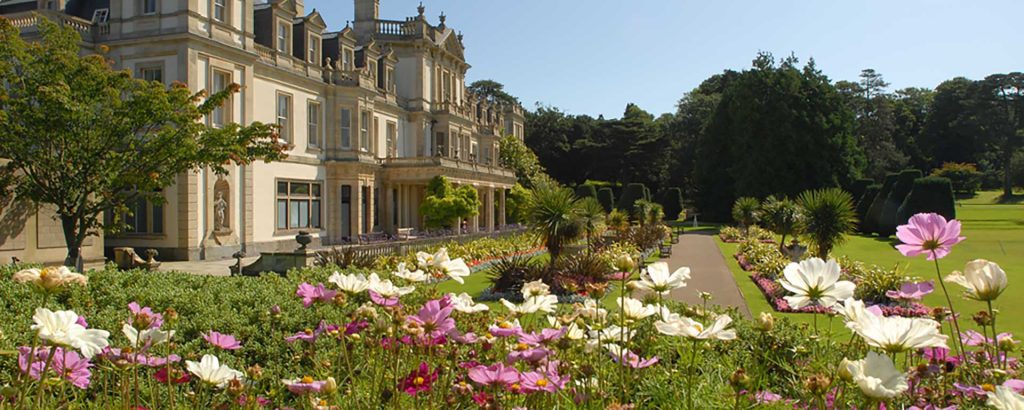
Thomas Mawson, a well-known landscape architect and first president of the Institute of Landscape Architecture, was commissioned to design a garden to complement the new house; landscaping began in 1894 and was completed in 1909.
The National Trust took over the running of the estate in 2013. The gardens host a number of different styles inspired by countries from all over the world, from an Italian influence in the Pompeiian Garden to the rainforest-like quality of the plants in the Exotics Garden.
Llancaiach Fawr
Located just to the north of the site of the former Llancaiach Colliery in the heart of the Rhymney Valley in South Wales, is Llancaiach Fawr Manor, a Tudor manor house. It is thought to have been built around 1530.

The Manor is considered to be one of the most important gentry houses to have survived from the 16th and 17th century period. It was heavily involved in events surrounding the English Civil War and was designed to be a place of self-contained refuge if it was attacked.
It was eventually converted into a farmhouse and in 1990, was re-opened as a living museum. Visitors can see the property as it would have looked in 1642. It is considered to be haunted.
Tredegar House
Tredegar House is a 17th-century Charles II-era mansion on the southwestern edge of Newport.
For over five hundred years it was home to the Morgan family, later Lords Tredegar, one of the most powerful and influential families in the area.
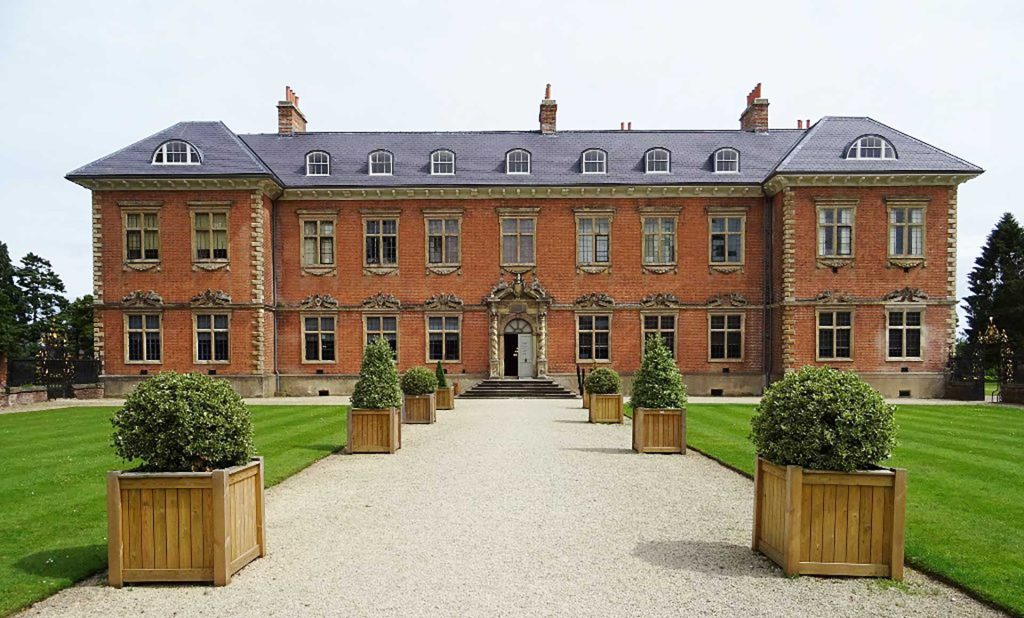
The earliest part of the building dates all the way back to the 15th century. It was originally built of stone but in the mid 1600s, William Morgan decided to rebuild the property using red brick, giving it the distinctive look we see today.
Newport County Council took over the property in 1974 and was taken over by the National Trust in 2011.
Cyfarthfa Castle
Cyfarthfa Castle is a castellated mansion that was once the home of the Crawshay family, ironmasters of Cyfarthfa Ironworks at Merthyr Tydfil.
The castle was designed in 1824 by the architect Robert Lugar for William Crawshay II, and built at a cost of approximately £30,000 using locally quarried stone.

Despite its appearance of a fortified building, it is in fact a house built in the style of a large mansion. It includes a large kitchen, a bake house and dairy, a billiard room, a library, and a mixture of reception rooms.
After the Crawshay family left the castle in the late nineteenth century, the building was converted into a museum and art gallery on the ground floor and a school on the upper floors in the early 20th century. It is still in operation today.
The building also included a brew house, an ice house, and a range of storage cellars that used to be home to over 15,000 individual bottles of wine.
Treowen
Treowen sits between Monmouth and Raglan and is a Grade I listed mansion. Antiquarian Charles Heath wrote of it in 1787:
“Over the entrance is a stone square with the armorial bearings of nine different noblemen and other characters of high rank in this County. A correspondent dignity pervades the whole of the interior. A staircase two yards wide, of 72 steps, with balustrades, the newels on the quarterspaces two feet round, the whole in solid oak, which still remains perfect, stands unrivalled in the Kingdom.”
His words still ring true today and the property is used for holidays and events.
Margam Castle
Margam Castle, is a late Georgian country house built for Christopher Rice Mansel Talbot. Designed by Thomas Hopper, the castle was constructed in a Tudor Revival style over a five-year period, from 1830 to 1835. It sits within Margam Country Park.
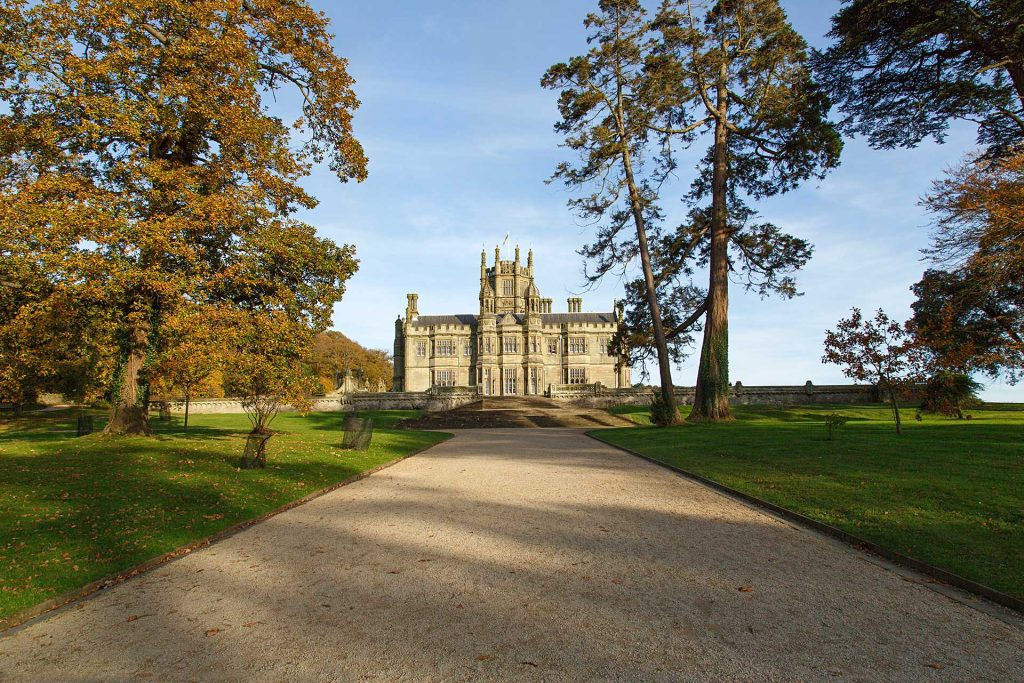
The house was built during 1830–40 at a cost of £50,000 and used sandstone from nearby Pyle quarry. Listed Grade I as a mansion of exceptional quality, the castle is home to some spectacular features, including the vast staircase hall and octagonal tower.
Until 1942, the Castle and estate remained in the ownership of the Talbot family when it was acquired by a local landowner, Sir David Evans Bevan, and subsequently, by the County Council in 1974, when it was in a ruinous state.
The castle is now in the care of Neath Port Talbot County Borough Council.
Newton House
Standing at the heart of the Dinefwr estate is the Grade II listed Newton House, not far from Llandeilo.
The residence was a family home for over three hundred years to the descendants of The Lord Rhys, the powerful Prince of the Welsh Kingdom of the Deheubarth.
Dinefor Castle was built during the 12th century and the first Newton House was originally built during the medieval period at some distance from the castle. The current Newton House was completed in 1660 under the command of Edward Rice. Turrets and battlements were added during the 1700s to romanticise the property.
During the 1970s, after a period of turbulence, the estate fell into disrepair, but Newton House was restored by CADW and The National Trust before being reopened in 1990.
Picton Castle
Further afield, down in west Wales, Picton Castle is a medieval castle that was built at the end of the 13th century by a Flemish knight.
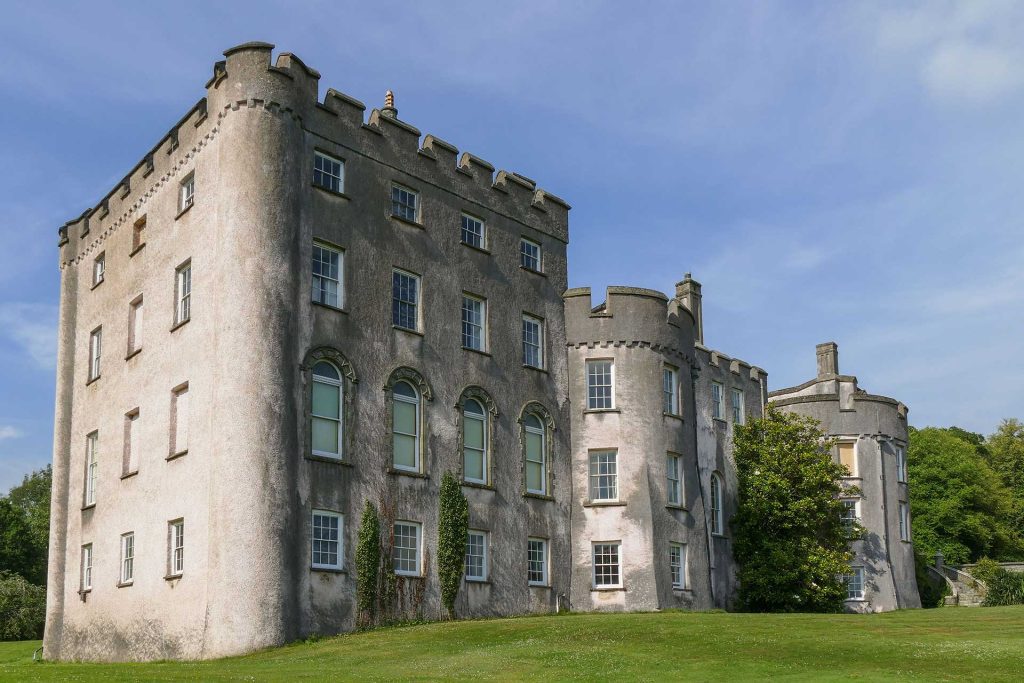
Situated near Haverfordwest, the building is unusual in that it was a former working castle that was transformed into a stately home in the 18th century. It was originally built in 1280, at the behest of Sir John de Wogan. It was passed down through the generations and in the late 1490s, became the centre of the Philipps family estates. Sir John Philipps, who inherited the castle, remodelled the building and created a new entrance which remained until the 1820s.
The castle remained in the Philipps family until the end of the 20th century when its owner donated it and its grounds to the Picton Castle Trust, a registered charity.
Insole Court
Llandaff’s Insole Court is a Grade II Listed Victorian Gothic mansion built for wealthy businessman James Harvey Insole, and dates back to 1855.
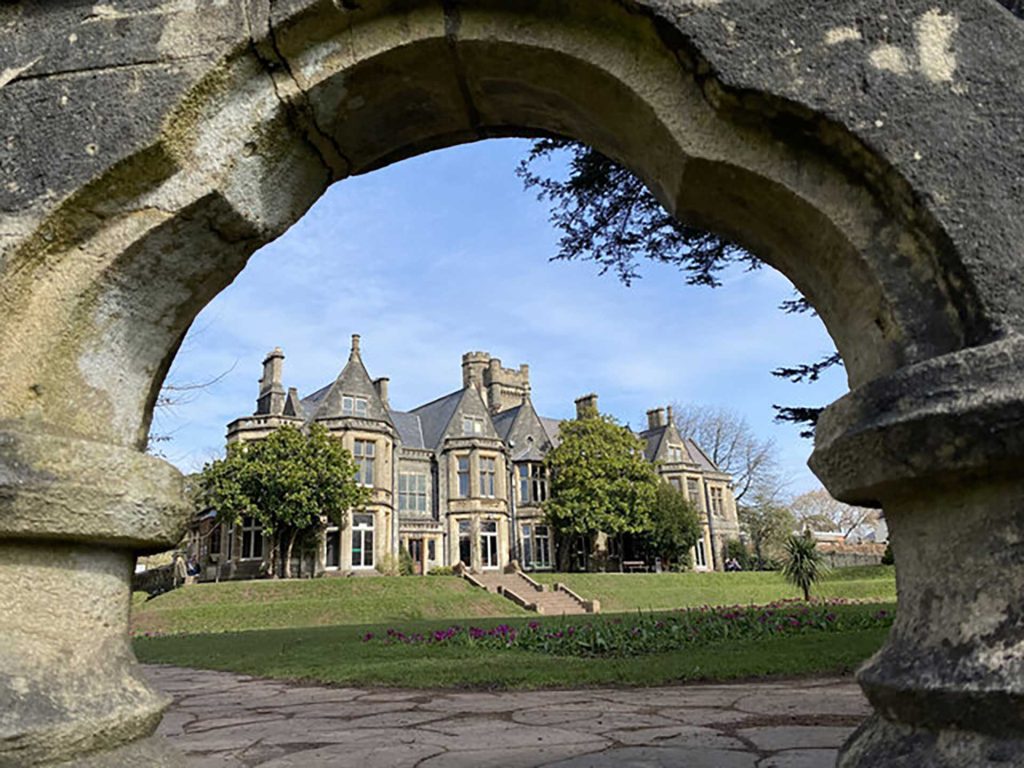
The Insole family lived on the site from 1856 to 1938 and had extensive coal-mining interests across the South Wales coalfield.
The original building was designed by W G & E Habershon. After its many uses throughout the year, the mansion fell into disrepair and was closed in 2006 on health and safety grounds. Following a long campaign by The Friend of Insole Court, Insole Estate Residents Association and the Llandaff Society, it was re-opened in November 2008.

All photographs used in this feature have been found in the public domain
